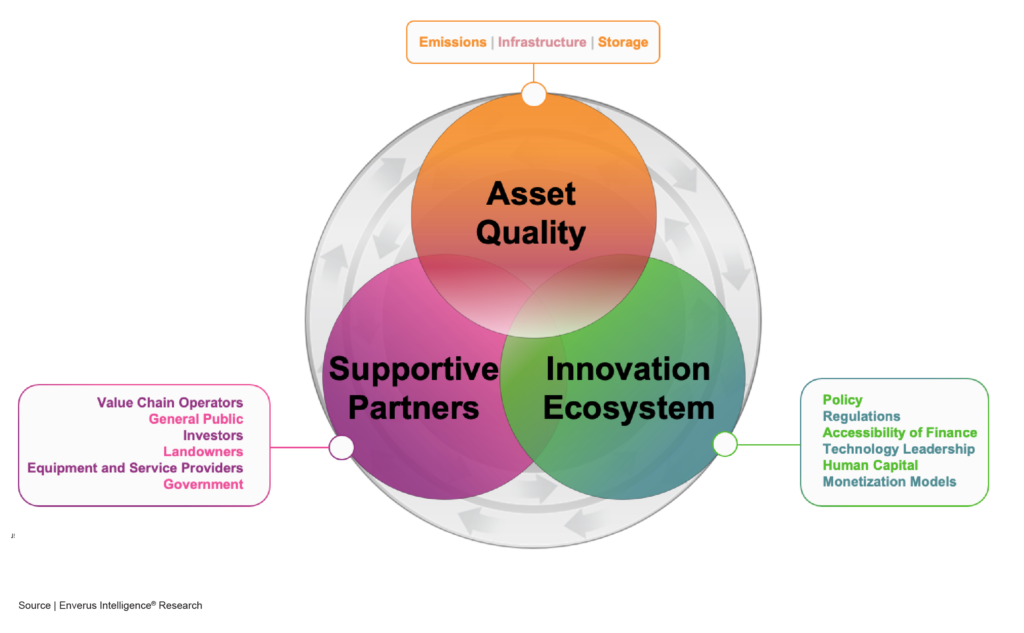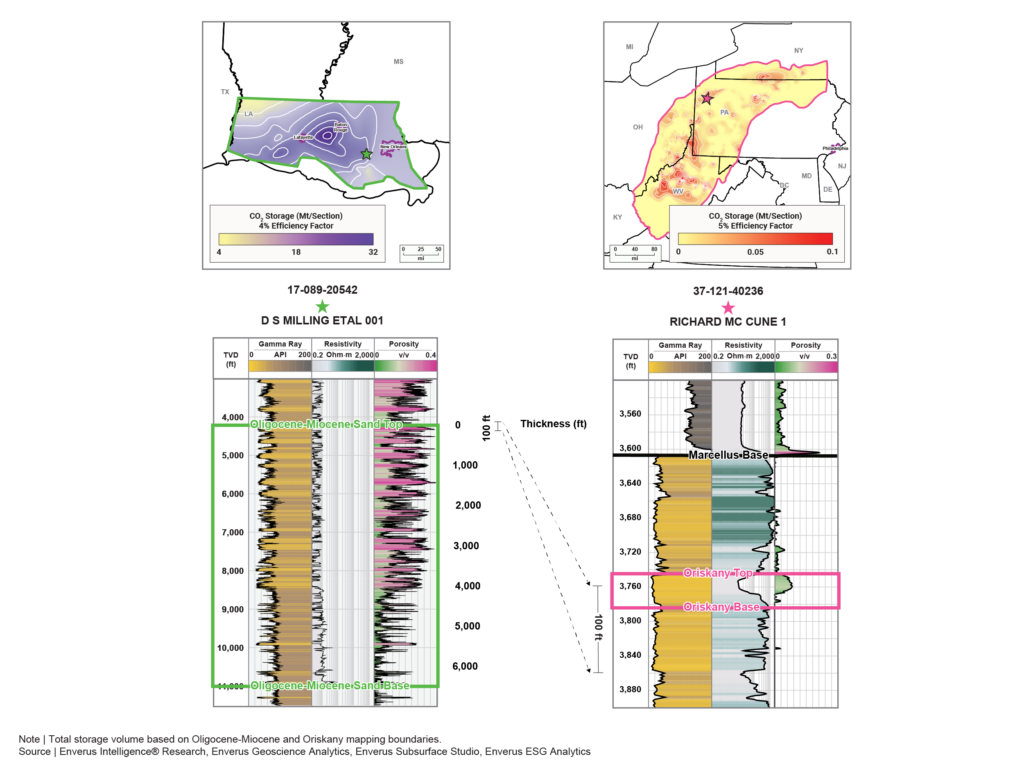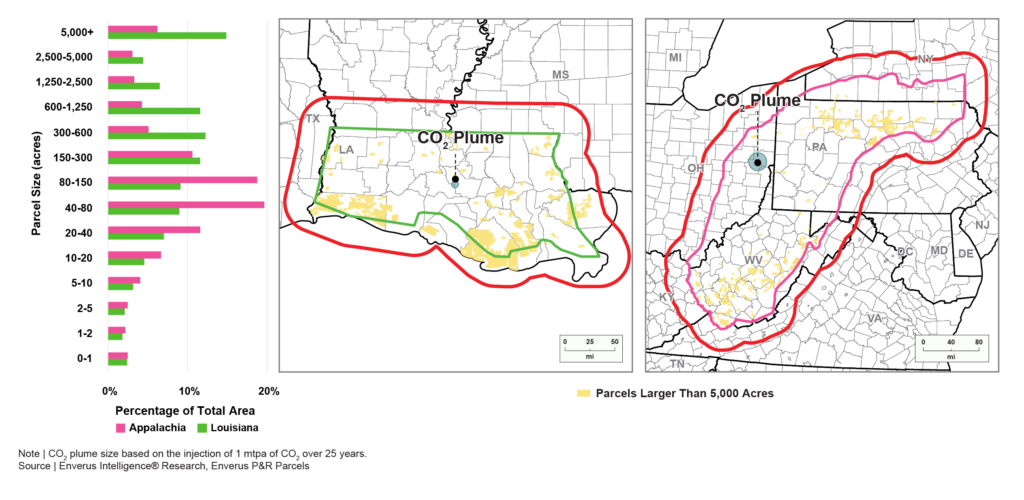The Inflation Reduction Act supercharged activity along the carbon capture, utilization and sequestration (CCUS) value chain and accelerated the race to secure partnerships with emitters and landowners for CO2 storage. As excitement turns to action, attention is shifting to evaluating risks along the value chain and to the factors that will distinguish successful projects. Enverus’ Energy Transition Research* (ETR) team’s “Carbon Management Trifecta” provides a rubric to identify winning and losing strategies.
What is the “Carbon Management Trifecta”?
The carbon management trifecta (Figure 1) describes the combination of factors that contribute to winning CCUS strategies. Successful projects require access to favorable conditions across three dimensions:
- Superior asset quality.
- Innovation ecosystems.
- Supportive partners.

Superior asset quality
To achieve superior asset quality, the combined cost of CO2 capture, transportation and storage is sufficiently low and the potential scale is sufficiently large, creating an economic source-to-sink value chain. Variation across each dimension is extreme. For example, ETR’s analysis shows only 1% of Appalachia emissions can be captured below $50/tonne, versus 65% in Louisiana.
Subsurface analysis of Louisiana’s Oligocene-Miocene Sands and Appalachia’s Oriskany Sandstone reveal even larger differences in storage potential (Figure 2). Only 1% of Appalachian storage potential in the Oriskany breaks even below $85/tonne, versus around 100% in Oligocene-Miocene Sands of Southern Louisiana.

Innovation ecosystems
Innovation ecosystems connect the policies, regulations, access to capital and business models available to support a commercial CCUS project. For example, the emissions profile of Pennsylvania (Appalachia) is dominated by power generation and emissions reduction targets could be addressed with zero-emission power sources. Louisiana’s emission profile, in contrast, contains a larger share of hard to abate sources and likely will require negative emission solutions like CCUS. Faster adoption rates, strong emissions targets and a streamlined permitting process are examples of how a strong innovation ecosystem accelerates the learning curve and increases efficiencies.
Supportive partners
Supportive partners refers to the relationships with the various stakeholders impacted by the project, such as operators in the value chain, the general public, investors, landowners and government. For example, ETR’s analysis shows Louisiana pore space ownership is far less fragmented than in Appalachia (Figure 3), simplifying the owner relationships and minimizing associated execution risk.

Each week Enverus Intelligence® | Energy Transition Research analysts spotlight our favorite ideas in Energy Transition Today. Sign up here to have it sent to your inbox.
To learn more visit the link below to watch our on-demand webinar: CCUS: Everything and the Carbon Sink.
*About Enverus Intelligence®| Energy Transition Research.
Enverus Intelligence Research, Inc. (EIR) is a subsidiary of Enverus and publishes energy-sector research that focuses on the oil and natural gas industries and broader energy topics including publicly traded and privately held oil, gas, midstream and other energy industry companies, basin studies (including characteristics, activity, infrastructure, etc.), commodity pricing forecasts, global macroeconomics and geopolitical matters. Energy Transition Research is [a research division of EIR focused on {Ian N. description}]. See www.enverus.com/disclosures for additional information.









